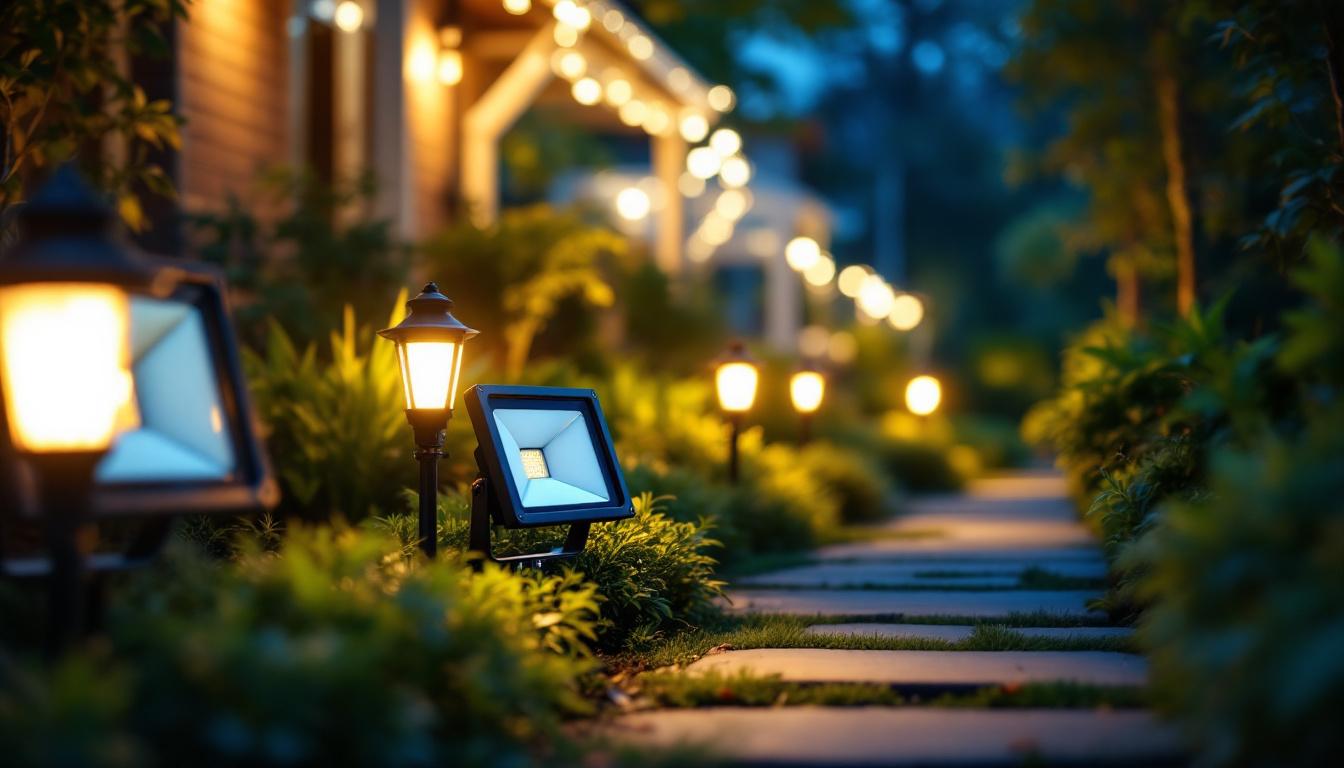
Fall ceiling lights represent a specialized category of lighting fixtures designed to enhance both functionality and aesthetics in residential and commercial spaces during the autumn season. For lighting contractors, mastering the nuances of these fixtures is essential, as it allows for tailored solutions that meet client expectations and seasonal demands.
These lights often incorporate warm color temperatures, dimmable features, and design elements that complement the ambiance associated with fall. Understanding the technical specifications, installation requirements, and design trends is crucial for contractors aiming to deliver high-quality, efficient, and visually appealing lighting solutions.
Unlike standard ceiling lights, fall ceiling lights are curated to evoke the essence of autumn through their color temperature, style, and functionality. Typically, they feature warm white to amber hues, ranging from 2700K to 3000K, which mimic the natural light during fall afternoons. This color temperature enhances the cozy and inviting atmosphere clients often seek during cooler months.
Moreover, many fall ceiling lights incorporate adjustable brightness settings, allowing users to control the mood and intensity of illumination throughout the day and evening. For lighting contractors, familiarity with these features ensures they can recommend and install fixtures that align with client lifestyles and preferences. Additionally, the design of these fixtures often draws inspiration from natural elements found in autumn, such as leaves, pumpkins, and rustic materials, making them not only functional but also a key part of seasonal décor.
Seasonal lighting is more than just a decorative element; it influences occupant comfort, energy consumption, and overall space usability. Lighting contractors who understand the specific demands of fall lighting can differentiate themselves in a competitive market by offering expert advice and customized installations.
Additionally, fall lighting installations often coincide with home renovations or commercial space updates, creating opportunities for contractors to expand their service offerings. By mastering fall ceiling light technologies and trends, contractors can position themselves as trusted advisors, increasing client satisfaction and loyalty. Furthermore, the rise of smart home technology allows for the integration of fall ceiling lights with home automation systems, enabling clients to control their lighting remotely and create schedules that align with their daily routines. This added layer of convenience and efficiency can be a significant selling point for contractors looking to enhance their client relationships and drive repeat business.
Successful installation of fall ceiling lights requires a thorough understanding of electrical standards, fixture compatibility, and environmental considerations. Lighting contractors must navigate these technical aspects to ensure safety, compliance, and optimal performance. Additionally, staying updated with the latest industry trends and innovations can significantly enhance the quality of installations, ensuring that clients receive not only aesthetically pleasing but also technologically advanced lighting solutions.
LED technology dominates the market for fall ceiling lights due to its energy efficiency, longevity, and versatility in color temperature adjustments. Contractors should prioritize fixtures that support tunable white LEDs or those with integrated smart controls to offer clients maximum flexibility. These smart fixtures can be controlled via mobile apps or voice-activated devices, allowing users to customize their lighting experience based on mood or activity, which is particularly appealing during the cozy months of fall.
When selecting bulbs, it is important to consider lumen output, color rendering index (CRI), and dimming capabilities. A CRI of 80 or higher is recommended to accurately render the warm tones of fall décor and natural materials. Furthermore, bulbs with smooth dimming curves enhance user experience by preventing flicker and abrupt changes in brightness. It’s also worth noting that the choice of color temperature can significantly impact the ambiance; warmer tones (around 2700K) can create an inviting atmosphere, perfect for gatherings and family time, while cooler tones (around 4000K) can be more energizing and suitable for workspaces.
Proper mounting and wiring are critical to the longevity and safety of fall ceiling lights. Contractors should verify that the electrical box can support the fixture’s weight and that wiring complies with local electrical codes. Utilizing junction boxes rated for the fixture’s wattage and ensuring secure grounding are mandatory steps. Moreover, it’s advisable to conduct a thorough inspection of the existing electrical system to identify any potential issues that could affect the installation process, such as outdated wiring or insufficient circuit capacity.
Additionally, positioning the fixtures to maximize ambient light distribution while minimizing glare is essential. For example, recessed fall ceiling lights can be strategically spaced to highlight architectural features or create layered lighting effects. Contractors should also consider integrating dimmer switches compatible with the installed fixtures to provide clients with control over lighting intensity. This flexibility allows homeowners to adapt their lighting to various occasions, from intimate dinners to festive gatherings, enhancing the overall experience of the space.
With increasing emphasis on sustainable building practices, lighting contractors must be knowledgeable about energy codes and certifications such as ENERGY STAR and DLC (DesignLights Consortium). Selecting fall ceiling lights that meet these standards not only reduces energy consumption but also qualifies clients for potential rebates and incentives. Understanding these certifications can also help contractors guide clients in making informed decisions that align with their environmental values and budgetary constraints.
Furthermore, contractors should advise clients on the benefits of automated lighting controls, including occupancy sensors and programmable timers, which can optimize energy use during the shorter daylight hours of fall. These measures contribute to long-term cost savings and environmental stewardship. Additionally, educating clients on the importance of regular maintenance, such as cleaning fixtures and replacing bulbs as needed, can further enhance the efficiency and lifespan of their lighting systems, ensuring they continue to enjoy the warm glow of their fall ceiling lights for many seasons to come.
Staying current with design trends enables lighting contractors to provide relevant and appealing solutions that resonate with client tastes and seasonal aesthetics.
Incorporating warm tones is a hallmark of fall lighting design. Fixtures with finishes such as brushed bronze, aged copper, or matte black complement the autumnal color palette. Lighting contractors should recommend these options to clients seeking to create cozy, inviting spaces.
Additionally, the integration of natural materials like wood or rattan in fixture design aligns with the organic feel of fall décor. Pendant lights with wooden accents or woven shades can add texture and visual interest, enhancing the overall ambiance.
Layered lighting involves combining ambient, task, and accent lighting to create dynamic and functional environments. For fall ceiling lights, this might include a central warm-toned chandelier paired with recessed LED downlights and wall sconces.
Lighting contractors should educate clients on how layered lighting can adapt to different activities and moods throughout the season. This approach not only improves usability but also elevates the aesthetic appeal of the space.
Smart home technology continues to influence lighting design. Fall ceiling lights equipped with smart controls allow users to adjust color temperature and brightness remotely or via voice commands. This capability is particularly appealing for clients who value convenience and energy management.
Contractors should be proficient in installing and configuring smart lighting systems, including compatibility with popular platforms such as Amazon Alexa, Google Assistant, and Apple HomeKit. Offering these advanced options can enhance client satisfaction and position contractors as forward-thinking professionals.
Despite advancements in lighting technology, contractors may encounter obstacles during fall ceiling light projects. Anticipating and addressing these challenges is vital for successful outcomes.
Low ceilings can restrict fixture choices and affect light distribution. Contractors should recommend flush mount or semi-flush mount fall ceiling lights that maintain sufficient headroom while providing adequate illumination.
Additionally, using fixtures with adjustable angles or diffusers can help direct light effectively without overwhelming the space. Custom solutions may also be necessary for unique architectural constraints.
Older buildings may have electrical systems that are incompatible with modern LED fixtures or smart controls. Contractors must assess the existing wiring and circuit capacity before installation.
In some cases, upgrading electrical panels or installing additional circuits may be required. Providing clients with clear explanations and cost estimates for these upgrades fosters transparency and trust.
Clients may have varying perceptions of what constitutes ideal fall lighting. Lighting contractors should conduct thorough consultations, including visual demonstrations or sample installations, to align expectations.
Utilizing lighting simulation software or physical mock-ups can help clients visualize the final effect, reducing the likelihood of dissatisfaction or costly adjustments post-installation.
Ensuring the longevity and performance of fall ceiling lights extends beyond installation. Lighting contractors should provide clients with guidance on maintenance and offer ongoing support services.
Regular cleaning of fixtures and bulbs is essential to maintain light quality and fixture appearance. Contractors should advise clients on safe cleaning methods and appropriate schedules, especially in environments prone to dust or humidity.
Replacing bulbs with the same specifications and checking for signs of wear or electrical issues can prevent premature failures and safety hazards.
Providing warranties on installation workmanship and recommending manufacturer warranties for fixtures builds client confidence. Additionally, contractors can offer service plans that include periodic inspections, bulb replacements, and system updates.
These value-added services not only enhance client satisfaction but also create recurring revenue streams for contractors.
For lighting contractors, mastering fall ceiling lights involves a blend of technical knowledge, design savvy, and client communication skills. By understanding the unique characteristics of fall lighting, adhering to best installation practices, and embracing emerging trends, contractors can deliver exceptional results that enhance both the functionality and ambiance of spaces.
Staying informed about energy-efficient technologies, smart lighting integration, and maintenance strategies further positions contractors as trusted experts in the field. Ultimately, this comprehensive approach not only meets seasonal lighting needs but also fosters long-term client relationships and business growth.
Ready to elevate your lighting projects this fall season? Look no further than LumenWholesale for a comprehensive selection of spec-grade fall ceiling lights. With unbeatable wholesale prices and no middleman markups, you can access premium lighting that meets the highest industry standards. Plus, enjoy the convenience of bulk buying with free shipping, ensuring you get the best value without any hidden fees. Don’t compromise on quality or affordability. Visit LumenWholesale now and experience the perfect blend of quality, affordability, and convenience for all your lighting needs.

Discover the essential insights lighting contractors need to know about the Maxim 7.5 LED Flush Mount.

Discover the essential insights into garage LED lighting that every lighting contractor needs to know.

Discover essential guidelines and common pitfalls for lighting contractors when dealing with electric dryer wall outlets.

Discover how selecting the best outdoor flood light bulbs can enhance your business as a lighting contractor.